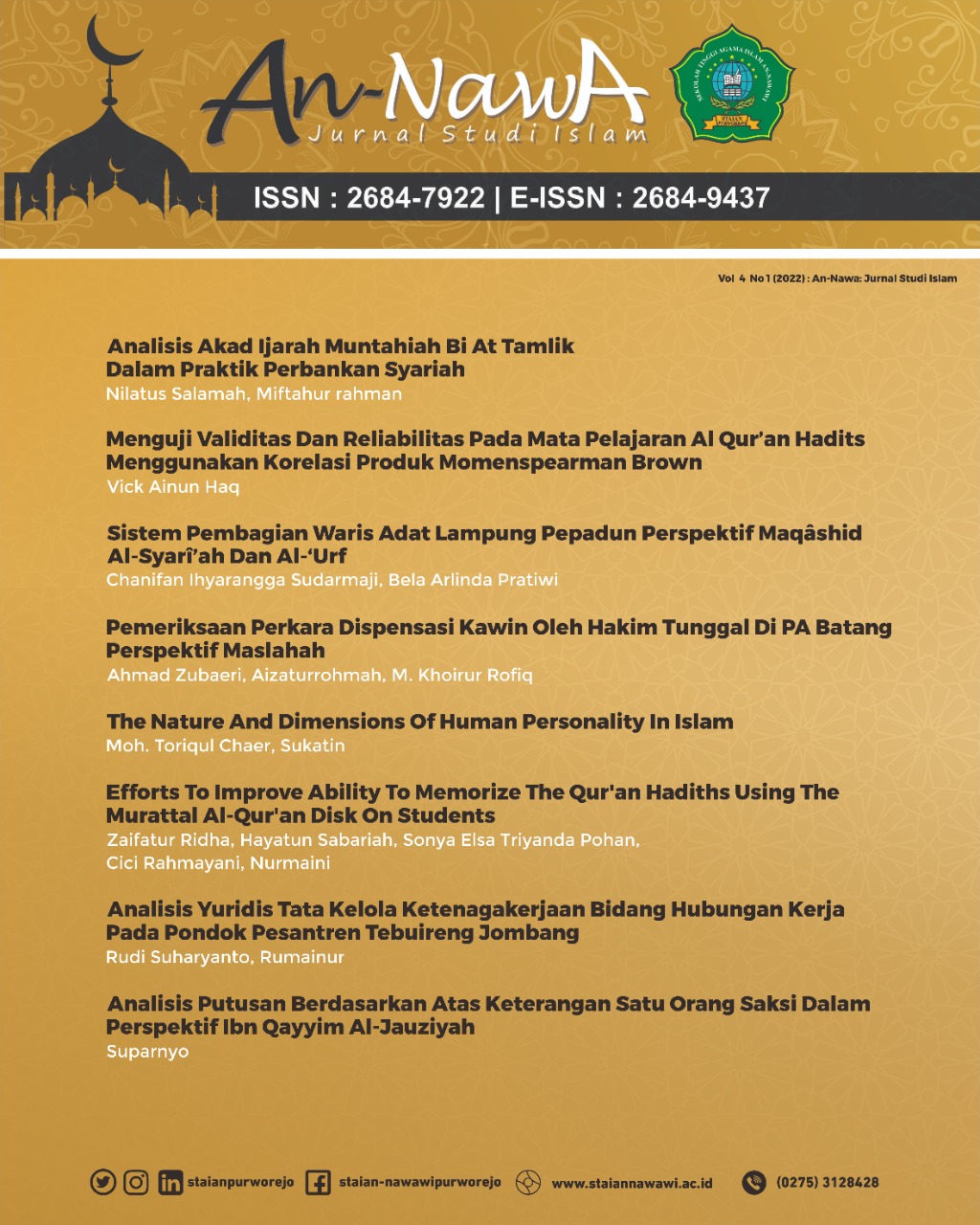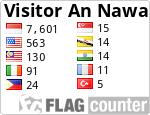Analisis Putusan Berdasarkan Atas Keterangan Satu Orang Saksi Dalam Perspektif Ibn Qayyim Al-Jauziyah
Abstract
The law of proof in a case is a very important thing, because the most important task of procedural law is to determine the truth in a conflict of interest. It is in determining the truth that evidence is sought that will provide information for the judge in making the final decision. This study aims to determine the analysis of the decision based on the testimony of one witness in the perspective of Ibn Qayyim Al-Jauziyah. This research is based on a study of the literature or also called library research, namely: Data sources consist of primary data sources, namely the book "al-Turuuqu al-Hukmiyyah fi Siyasah wa Syar'iyyah" by Ibn Qayyim al-Jauziyah and secondary data sources consist of the Koran, hadith, fiqh books and previous research, Data Analysis in the form of: Analytical and Comparative Descriptive, namely analyzing data by comparing the opinions of the scholars then selecting the strongest and most valid opinion or looking for possibilities for compromised. The results of the study indicate that a judge may give a decision based on the testimony of one witness, including in cases of seeing the new moon at the beginning of Ramadan, statements of expert witnesses, cases that should not be seen by men and the last is in cases of witness statements in translation. and the like and do not apply in criminal cases.
References
Ahdal, A. B. (1977). al-Faraidu al-Bahiyyah. Menara Kudus.
Al-Jauziyah, I. Q. (n.d.). at-Turuqu al-Hukmiyyah fi Siyasah wa Syar’iyyah (I. Q. Al-Jauziyah (ed.)). Daar al-Kutub al-Ilmiyyah.
Al-Zuhairi, W. (n.d.). Al-Fiqh Al- Islamy wa Adillatuh, Juz VI. Daar Al-Fikr.
Anshoruddin. (2004). Hukum Pembuktian Menurut Hukum Acara Islam dan Hukum Positif. In Pustaka Pelajar, Cet. I. Pustaka Pelajar, Cet. I.
Arto, M. (2000). Praktek Perkara Perdata pada Pengadilan Agama. Pustaka Pelajar, Cet. III.
As-Syaukani, M. bin A. M. bin M. (n.d.). Nail al-Authar. Daar Kutub al-Ilmiyyah.
Azwar, S. (2001). Metode Penlitian. Pustaka Pelajar. cet III.
Daud, A. (1994). Sunan Abu Daud Kitabu al Aqdiyah. Dar al Fikr.
Fathurrahman, M. Y. dan. (1993). Dasar-dasar Pembinaan Hukum Fiqh Islami. PT. Al-Ma’arif, Cet. III.
Harahap, M. Y. (2003). Kedudukan Kewenangan dan Acara Peradilan Agama. Sinar Grafika.
Jashash, I. A. B. A. A.-R. A.-. (n.d.). Ahkam Al-Qur’an, Juz I. Daar Al- Fikr.
Manan, A. (2005). Penerapan Hukum Acara Perdata di Lingkungan Peradilan Agama. Kencana.
Muhadjir, N. (1990). Metode Penelitian Kualitatif. Rake Sarasin.
Muslim. (n.d.). Shohih Muslim, Juz. 2. daar al-Kutub al-Arabiyah.
Oeripkartawinata, R. W. S. dan I. (1989). Hukum Acara Perdata dalam Teori dan Praktek. Mandar Maju.
Rasaid, M. N. (1999). Hukum Acara Perdata. Sinar Grafika, Cet. II.
Rasyid, R. (2003). Hukum Acara Peradilan Agama. PT. Raja Grafindo Persada.
RI, D. (1989). Al-Qur’an dan Terjemahannya. In CV. Toha Putra: Vol. ,. CV. Toha Putra.
Sabiq, S. (n.d.). Fiqh Al Sunnah, Jilid III. Daar Al-Fikr.
Surachmad, W. (1972). Pengantar Penelitian Ilmiah. Tarsito.












